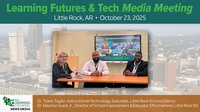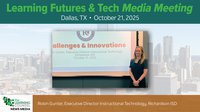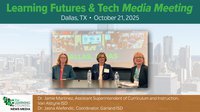House coronavirus response act passes with school meal assistance proposals – By Naaz Modan, Education Dive
After discussion among lawmakers, all three pieces of legislation for meal assistance for schools closed or transitioned to remote learning due to the ongoing coronavirus outbreak were included in the Families First Coronavirus Response Act, a larger package the House voted on early Saturday morning. The package passed and will now head to the Senate.
Members of the House Committee on Education and Labor are introducing today three proposals for meal assistance for schools closed or transitioned to remote learning due to the ongoing coronavirus outbreak. An aide says the proposals are expected to pass the full House.
One bipartisan proposal led by Reps. Suzanne Bonamici (D-Oregon) and James Comer (R-Kentucky) would create a nationwide waiver authority to allow school officials to distribute food in any number of settings across all nutrition programs. It would also allow for flexibility on what's included in meals if the food supply or procurement are disrupted. The flexibilities would apply to schools that have closed due to COVID-19 and those that have transitioned to remote learning.
The second bill, led by Rep. Ilhan Omar (D-Minnesota), would allow the U.S. Department of Agriculture to approve state waiver requests for meal distrubution even if they result in increased costs to the federal government. Rep. Marcia Fudge (D-Ohio) and Rep. Bobby Scott (D-Virginia) are also expected to introduce a bill that would ensure low-income families don't lose access to basic essentials under pandemic adjustments being made to the electronic benefit transfer program. These two bills would also allow more flexibility for school meal distribution and make it easier for families to access food assistance benefits.
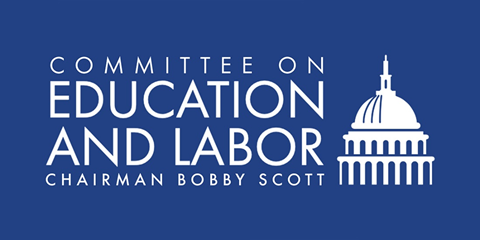
Senate approves public education budget that raises per-pupil spending by 5% - By Marjorie Cortez, KLS.com
The Utah Senate gave unanimous approval to SB2 Monday, the state’s public education budget, which is highlighted by a 5% increase to the value of the weighted pupil unit.
The WPU is the basic building block of public education funding and gives school districts and charter boards maximum flexibility to spend the funds on their specific needs, although it largely goes toward educator salaries and benefits.
The bill sets the value of each weighted pupil unit at $3,710 for fiscal year 2021, which represents $170 million in new ongoing funding for Utah schools through increases to the WPU alone.
Prior to the start of the legislative session, lawmakers funded $50.6 million in ongoing funds for enrollment growth, said Sen. Lyle Hillyard, R-Logan, co-chairman of the Public Education Appropriations Subcommittee.
New spending for public education is expected to be about $400 million, which includes some new initiatives in early childhood education, training and mentoring principals and a funding program for geographically isolated schools.

Congress gets a proposal to spend $400 million on creating more apprenticeships – By Delece Smith-Barrow, The Hechinger Report
While the Covid-19 virus was shuttering on-campus classes and emptying dorms at colleges across the U.S., it wasn’t the only education topic under discussion in Congress. Lawmakers were working on solutions to some of higher education’s pressing problems – voting to block a rule from the Department of Education that would have made it more difficult for defrauded borrowers to receive debt relief, for example, and proposing legislation to encourage alternative educational paths after high school.
Hoping to increase registered apprenticeships beyond the approximately 585,000 that exist now, Rep. Susan Davis (D-Calif.) is advocating for a first-ever reauthorization of the National Apprenticeship Act, which was first enacted in 1937. She introduced a draft bill in early March that asks for $400 million in fiscal year 2021 for apprenticeship programs. In fiscal year 2019, Congress appropriated $160 million to the Department of Labor to expand apprenticeship programs under the National Apprenticeship Act.
Though the likelihood of the bill becoming law isn’t strong right now, the draft bill, and a recent Congressional hearing for it, speak to a larger message being heard more often these days: Think less about getting an expensive four-year degree and instead pick up a trade. And this message is one worth considering, labor market experts say.
“Many Americans believe that attending a traditional four-year college is critical to obtaining economic success. But this specific path of obtaining a higher education may not be the best fit for everyone,” Davis said in a Congressional hearing in early March. Apprenticeship programs, she said, “combine business needs with quality training standards and have a long track record of success.”
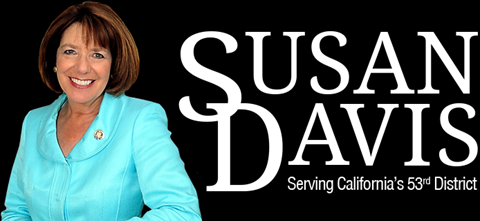
Redefining what ‘code’ means today – By Dmitry Shapiro, eSchool News
In today’s world, STEM skills are in higher demand than ever before. We look to educators to train and prepare the next generation of engineers, inventors, and makers–often introducing students to these concepts at a very young age. This is especially the case when it comes to computer science. From Hour of Code to after-school or weekend coding camps, there are countless opportunities for students to get involved in coding and build a foundation for success in any 21st-century career path.
We largely think of coding and computer science as a standalone industry today. There’s a general belief that teaching students to code will set them on a journey towards a prestigious career at a big tech company, or maybe even as founders of the next Google or Facebook. But aside from a small handful of outliers, a majority of students will not find themselves on this path. Why? Because they’re simply not interested in pursuing these types of careers and trying to convince them that they should be is a challenge in itself.
To combat this mentality, we need to rethink the way we understand and approach computer science education. The value of teaching computer science for students early on is not to inspire them to get a degree in the field or work at Google (though that’s certainly not a bad outcome). Instead, it’s about teaching students that almost every career of tomorrow’s world will involve encountering or manipulating code in some way. Whether they grow up to be a lawyer, teacher, artist or marketing executive, knowing how to create and work with code will be as indispensable as being able to create a PowerPoint presentation or even write an email.









